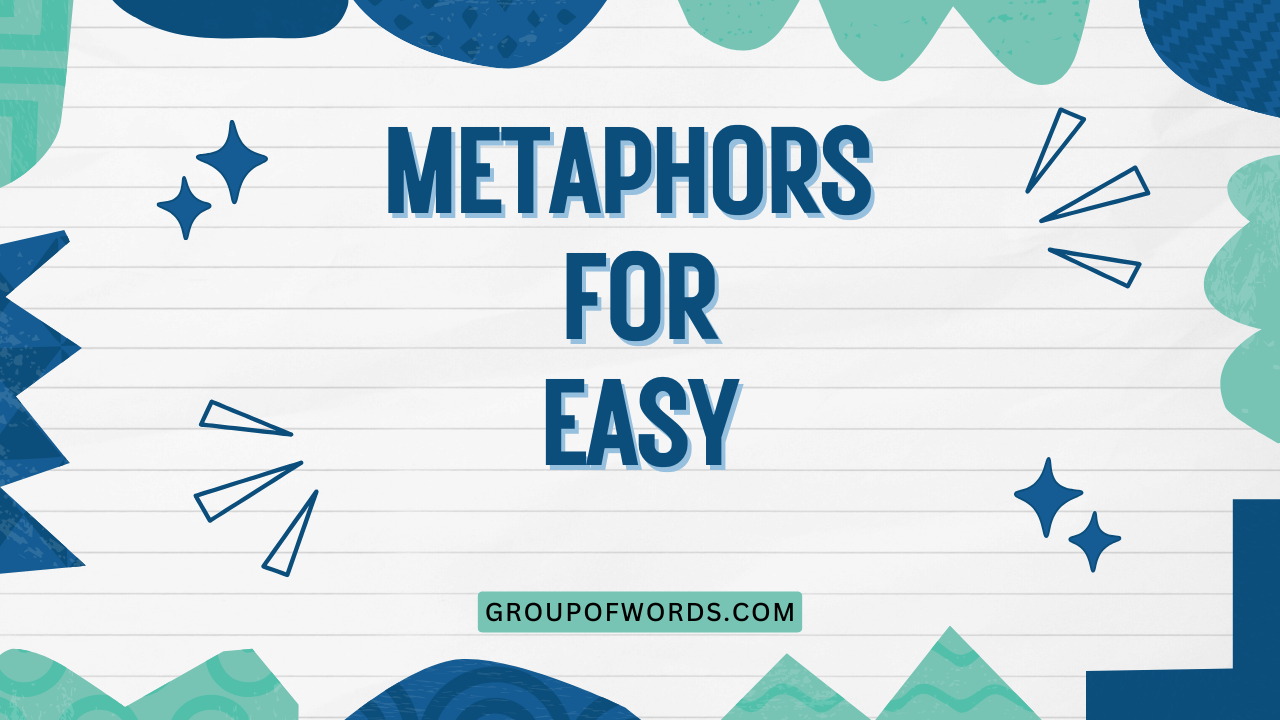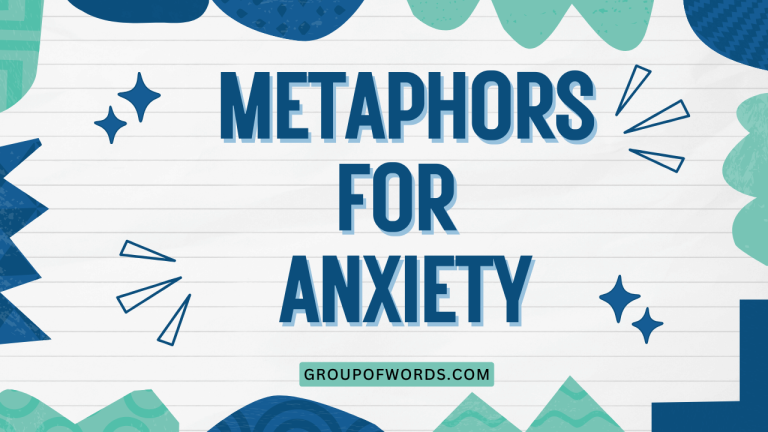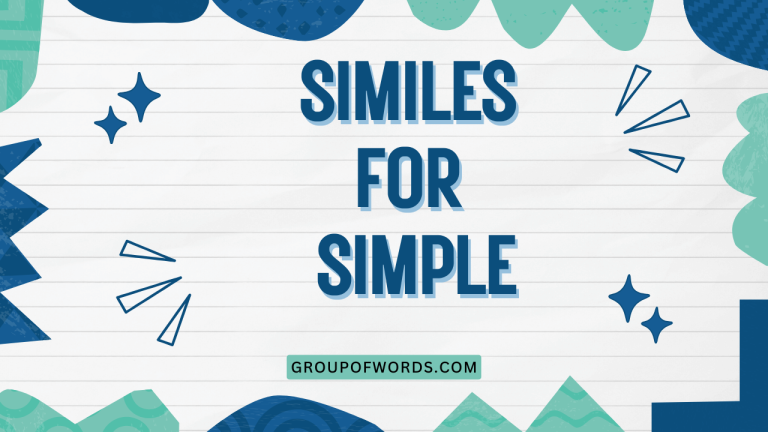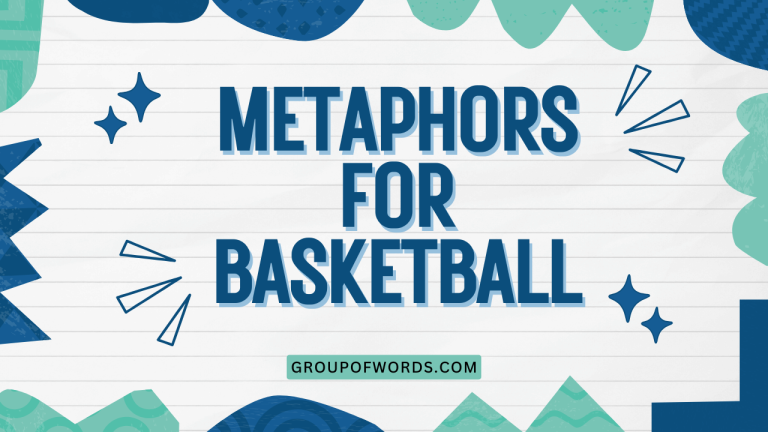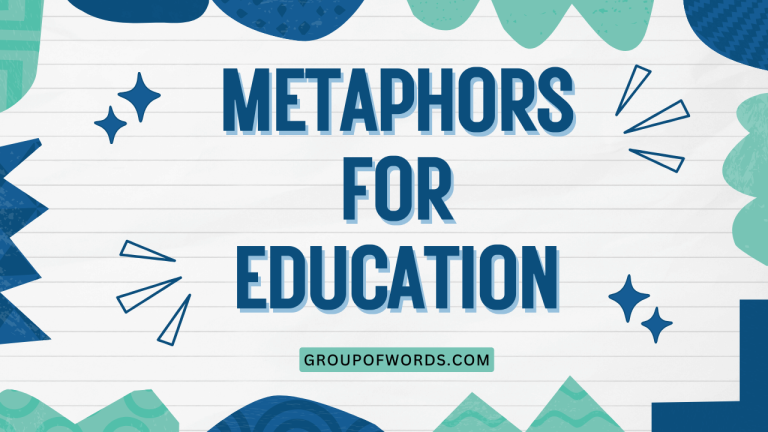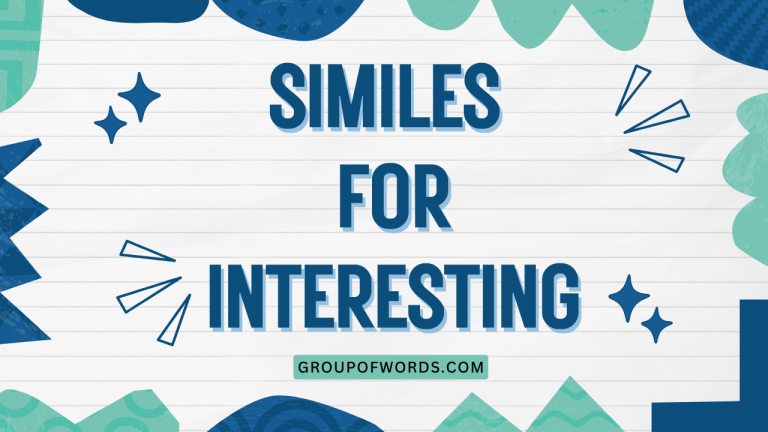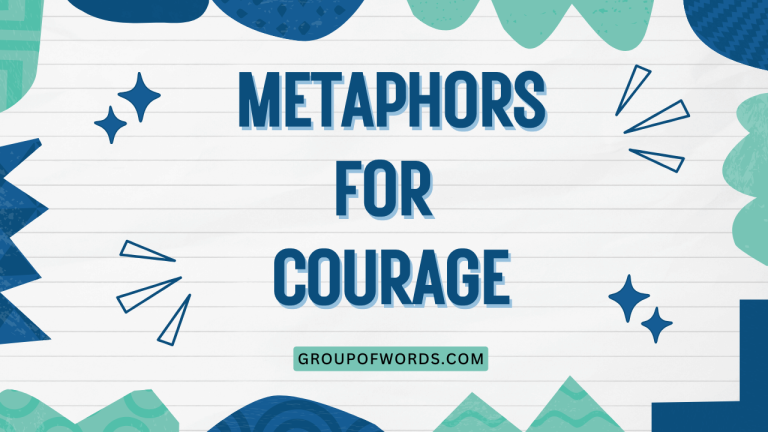Metaphors for “Easy”: A Comprehensive Guide
Understanding how to use metaphors to express the concept of “easy” enhances your English fluency and adds color to your communication. Metaphors allow you to convey the idea of ease in a more vivid and engaging way than simply using the word “easy.” This article explores various metaphors for “easy,” providing definitions, examples, usage rules, and practice exercises to help you master this aspect of English.
Whether you’re an ESL learner, a student studying for an English exam, or simply someone looking to improve their vocabulary, this guide will provide valuable insights and practical tools to broaden your expressive capabilities. By the end of this article, you’ll be able to confidently use a variety of metaphors to describe things that are “easy” in different contexts.
Table of Contents
- Introduction
- Definition of Metaphors for “Easy”
- Structural Breakdown
- Types and Categories of Metaphors for “Easy”
- Examples of Metaphors for “Easy”
- Usage Rules
- Common Mistakes
- Practice Exercises
- Advanced Topics
- FAQ
- Conclusion
Definition of Metaphors for “Easy”
A metaphor is a figure of speech that directly compares two unrelated things, asserting that one thing *is* another, to suggest a likeness or analogy between them. When we use metaphors for “easy,” we’re not literally saying something is effortless, simple, or natural.
Instead, we’re using imagery and comparison to convey the sense of ease, lack of difficulty, or straightforwardness.
Metaphors for “easy” function to add nuance and vividness to our descriptions. They provide a more engaging and relatable way to express the idea that something requires little effort or presents no significant challenge.
These metaphors can be classified based on the aspect of “ease” they emphasize, such as the lack of effort, the simplicity of the process, or the inherent nature of the task.
The context in which these metaphors are used is crucial. The effectiveness of a metaphor depends on the audience’s understanding and ability to relate to the comparison being made.
A metaphor that resonates with one group may not be as effective with another. Therefore, choosing the right metaphor requires careful consideration of the audience and the specific situation.
Structural Breakdown
The structure of metaphors for “easy” typically involves two key elements: the tenor and the vehicle. The tenor is the subject being described (the “easy” task or situation), and the vehicle is the image or concept used to represent it. The connection between the tenor and the vehicle creates the metaphorical meaning.
For example, in the metaphor “It was a walk in the park,” the tenor is the task or situation being described as easy, and the vehicle is “a walk in the park.” The comparison suggests that the task was as pleasant and effortless as taking a leisurely stroll in a park.
Understanding the underlying structure of these metaphors helps in both interpreting and creating them. By identifying the tenor and the vehicle, you can analyze the intended meaning and the effectiveness of the comparison.
Similarly, when creating metaphors, consider what image or concept best captures the essence of “easy” that you want to convey.
The grammatical structure usually involves using verbs or nouns that suggest ease or simplicity. Verbs like “sail through,” “glide,” or “breeze through” imply effortless progress.
Nouns like “piece of cake,” “walk in the park,” or “child’s play” represent tasks that are simple and easily accomplished. Adjectives are less common, but phrases like “smooth sailing” indirectly describe something easy.
Types and Categories of Metaphors for “Easy”
Metaphors for “easy” can be categorized based on the specific aspect of ease they emphasize. Here are some common categories:
Effortless Action
These metaphors highlight the lack of effort required to complete a task. They often involve verbs of motion that suggest ease and fluidity.
Simplicity and Clarity
These metaphors emphasize the straightforward nature of a task, suggesting it is uncomplicated and easily understood.
Natural and Inherent Ability
These metaphors imply that a task is easy because it aligns with one’s natural abilities or inclinations.
Familiarity and Habit
These metaphors suggest that a task is easy because it is well-known or has been done many times before, making it second nature.
Smooth and Unimpeded Progress
These metaphors focus on the lack of obstacles or challenges encountered while performing a task, highlighting the ease of movement and progress.
Examples of Metaphors for “Easy”
Here are extensive examples of metaphors for “easy,” categorized by the types discussed above.
Effortless Action Examples
These metaphors emphasize the lack of strain or difficulty in completing a task. They often use imagery of gliding or flowing.
| Metaphor | Explanation | Example Sentence |
|---|---|---|
| A breeze | Implies a light and effortless experience. | The exam was a breeze for her. |
| A walk in the park | Suggests a pleasant and easy experience. | For him, fixing computers is a walk in the park. |
| Sailing through | Implies smooth and trouble-free progress. | She sailed through the interview process. |
| Gliding through | Suggests effortless movement and progress. | He glided through the presentation without any nervousness. |
| Breezing through | Similar to “sailing through,” indicating ease. | They breezed through the first part of the project. |
| Floating through | Suggests a light and effortless journey. | She floated through her yoga routine, feeling completely relaxed. |
| Drifting through | Implies a relaxed and passive ease. | He drifted through the semester with minimal effort and still got good grades. |
| Sliding through | Suggests smooth and easy passage. | The negotiations slid through without any major disagreements. |
| Wafting through | Implies a gentle and effortless movement. | The scent of lavender wafted through her senses, providing a calm feeling. |
| Flying through | Suggests rapid and effortless completion. | The team flew through the tasks and finished ahead of schedule. |
| A piece of cake | Suggests something is very easy to do. | Solving this puzzle is a piece of cake for him. |
| Like taking candy from a baby | Emphasizes the extreme ease of something. | Beating them at chess was like taking candy from a baby. |
| As easy as pie | Indicates something is very simple and straightforward. | Learning to ride a bike was as easy as pie for her. |
| A cinch | Suggests something is very easy to accomplish. | Getting the promotion was a cinch after all her hard work. |
| A snap | Implies something can be done quickly and easily. | Installing the software was a snap. |
| A cakewalk | Similar to “a walk in the park,” indicating ease. | The competition was a cakewalk for the experienced athlete. |
| A picnic | Suggests a pleasant and easy experience. | Organizing the event was a picnic compared to last year’s disaster. |
| Plain sailing | Indicates smooth and easy progress. | Once we had the initial funding, it was plain sailing from there. |
| Smooth sailing | Similar to “plain sailing,” suggesting ease. | After the initial hiccups, it was smooth sailing all the way. |
| A doddle | Suggests something is very easy to do. | For her, mathematics is a doddle. |
| As easy as ABC | Emphasizes the simplicity of something. | Learning the basics of coding is as easy as ABC. |
| A child’s play | Implies something is very simple and easy, even for a child. | For the experienced surgeon, the operation was child’s play. |
| Like clockwork | Suggests something happens easily and regularly. | The project ran like clockwork from start to finish. |
| A piece of cake | Suggests something is very easy to do. | Baking a cake is a piece of cake for my mom. |
Simplicity and Clarity Examples
These metaphors highlight the straightforwardness and lack of complexity in a task.
| Metaphor | Explanation | Example Sentence |
|---|---|---|
| Black and white | Implies something is clear and straightforward. | The rules were black and white, leaving no room for interpretation. |
| Clear as day | Suggests something is easily understood. | The instructions were as clear as day. |
| Simple as ABC | Emphasizes the basic nature of something. | The process is as simple as ABC. |
| Straightforward | Indicates a direct and uncomplicated approach. | The solution was straightforward and easy to implement. |
| Cut and dried | Suggests something is settled and uncomplicated. | The agreement was cut and dried, with no further negotiations needed. |
| Open and shut | Implies something is easily resolved and clear-cut. | The case was open and shut, with overwhelming evidence of guilt. |
| In a nutshell | Suggests something is concise and easily understood. | In a nutshell, the plan is to increase sales by 20%. |
| The long and short of it | Implies a brief and clear summary. | The long and short of it is that we need more funding. |
| Easy to grasp | Indicates something is easily understood. | The concept was easy to grasp, even for beginners. |
| No-brainer | Suggests something is obvious and requires little thought. | Accepting the offer was a no-brainer. |
| A piece of cake to understand | Emphasizes the simplicity of understanding something. | Quantum physics is not a piece of cake to understand. |
| Like talking to a wall | Implies a lack of understanding or communication (opposite of easy understanding). | Trying to convince him is like talking to a wall. |
| Easy to see | Indicates something is obvious and easily noticed. | It’s easy to see why she’s so popular. |
| Easy to follow | Suggests something is clear and easy to understand and apply. | The recipe was easy to follow, even for a novice cook. |
| Clear-cut | Implies something is unambiguous and easily defined. | The decision was clear-cut, with no room for doubt. |
| Plain as day | Similar to “clear as day,” indicating ease of understanding. | The answer was plain as day, but I didn’t see it at first. |
| Readable | Suggests text or information is easy to understand. | The report was highly readable and easy to digest. |
| Understandable | Indicates something can be easily comprehended. | The explanation was understandable, even to those unfamiliar with the topic. |
| Self-explanatory | Suggests something requires no explanation. | The instructions were self-explanatory. |
| Elementary | Implies something is basic and easily understood. | The problem was elementary, easily solved with basic arithmetic. |
Natural and Inherent Ability Examples
These metaphors suggest that a task is easy because it aligns with one’s natural talents or inclinations.
| Metaphor | Explanation | Example Sentence |
|---|---|---|
| Second nature | Implies something is so ingrained it feels natural. | Speaking French is second nature to her after living in Paris for years. |
| Like riding a bike | Suggests something is never forgotten once learned. | Once you learn to code, it’s like riding a bike; you never forget. |
| Comes naturally | Indicates something is easy due to inherent ability. | Singing comes naturally to her. |
| In his/her blood | Suggests a talent or skill is inherent. | Playing the piano is in her blood; her mother was a concert pianist. |
| A natural | Implies someone has an innate talent for something. | She’s a natural at public speaking. |
| Born for it | Suggests someone is destined for a particular task. | He was born for this job; he has all the right skills and personality. |
| A knack for it | Implies a natural talent or aptitude. | She has a knack for languages, picking them up quickly. |
| Gifted | Suggests a natural talent or ability. | He’s gifted in mathematics and can solve complex problems effortlessly. |
| Talented | Similar to “gifted,” indicating a natural ability. | She’s a talented artist with a unique style. |
| Comes easy to him/her | Indicates something is effortless due to natural skill. | Solving puzzles comes easy to him. |
| Like breathing | Implies something is as natural and effortless as breathing. | For him, writing poetry is like breathing. |
| Second skin | Suggests something feels completely natural and comfortable. | After years of experience, the uniform felt like a second skin to the soldier. |
| Meant to be | Implies a natural fit or destiny. | They were meant to be together; their personalities complemented each other perfectly. |
| Wired for it | Suggests someone is naturally predisposed to a skill. | He’s wired for leadership; he naturally takes charge and inspires others. |
| Has a feel for it | Implies a natural understanding or intuition. | She has a feel for interior design and can create beautiful spaces effortlessly. |
| Innate ability | Suggests an inherent talent or skill. | He has an innate ability to connect with people from all walks of life. |
| Natural flair | Implies a natural talent or style. | She has a natural flair for fashion and always looks stylish. |
| A born leader | Suggests someone is naturally inclined to lead. | He’s a born leader, inspiring his team to achieve great things. |
| A natural at | Implies someone has an innate talent for something. | She’s a natural at playing the piano. |
Familiarity and Habit Examples
These metaphors suggest that a task is easy because it is well-known or has been done many times before.
| Metaphor | Explanation | Example Sentence |
|---|---|---|
| Like the back of my hand | Implies something is very familiar. | I know this city like the back of my hand. |
| Old hat | Suggests something is familiar and no longer exciting. | For him, these tasks are old hat. |
| Second nature | Implies something is so familiar it feels natural. | Using the software is second nature to her after years of practice. |
| Rote | Suggests something is done automatically due to repetition. | The process became rote after doing it every day for a year. |
| Well-trodden path | Implies a familiar and easy course of action. | Following the well-trodden path is the easiest way to succeed in this industry. |
| Been there, done that | Suggests familiarity and experience with something. | Been there, done that; I know exactly what to expect. |
| Like clockwork | Suggests something happens regularly and without fail. | The team works like clockwork, completing tasks efficiently. |
| Muscle memory | Implies a physical skill is performed automatically due to practice. | Playing the guitar is now muscle memory after years of practice. |
| Habitual | Suggests something is done out of habit and requires little thought. | Checking emails has become a habitual part of his morning routine. |
| Routine | Implies something is done regularly and without difficulty. | The daily routine made the work feel easy and predictable. |
| A well-worn groove | Suggests a familiar and comfortable routine. | They had settled into a well-worn groove, making their work efficient. |
| A regular thing | Implies something is done frequently and easily. | Going to the gym is a regular thing for her, making it feel effortless. |
| Like riding a bike | Suggests a skill never forgotten after initial learning. | Once you learn to swim, it’s like riding a bike; you never forget. |
| Tried and true | Implies something is reliable and easy due to past success. | Using the tried and true method is the easiest way to achieve the desired result. |
| Old faithful | Suggests something is reliable and easy due to long-term use. | The old faithful recipe is always easy to follow and produces delicious results. |
| Road-tested | Implies something has been thoroughly tested and is easy to use. | The road-tested software is easy to install and use. |
| Second skin | Suggests something feels completely natural and comfortable due to familiarity. | After years of working in the kitchen, the chef’s apron felt like a second skin. |
| A daily grind | Implies something is done regularly and easily, though perhaps monotonously. | The daily grind of paperwork became easy after a while. |
| A familiar tune | Suggests something is easily recognized and understood due to familiarity. | The argument was a familiar tune; they had had it many times before. |
Smooth and Unimpeded Progress Examples
These metaphors focus on the lack of obstacles or challenges encountered while performing a task.
| Metaphor | Explanation | Example Sentence |
|---|---|---|
| Smooth sailing | Implies progress is uninterrupted and easy. | After the initial challenges, it was smooth sailing all the way. |
| No bumps in the road | Suggests a trouble-free journey or process. | The project went smoothly; there were no bumps in the road. |
| A clear path | Implies a straightforward and unobstructed route. | The instructions provided a clear path to success. |
| No obstacles | Suggests nothing is hindering progress. | With no obstacles in their way, they completed the task quickly. |
| A green light | Implies permission and unobstructed progress. | Once we got the green light, we started the project immediately. |
| A free ride | Suggests an easy and unopposed journey. | He got a free ride to the top, thanks to his connections. |
| A straight shot | Implies a direct and easy route to a goal. | The path to promotion was a straight shot for her. |
| Open road | Suggests freedom and unobstructed progress. | With the open road ahead, they felt like anything was possible. |
| No hurdles to jump | Suggests no challenges or obstacles to overcome. | There were no hurdles to jump, making the process straightforward. |
| A walkover | Suggests an easy victory or success. | The match was a walkover; they won easily. |
| Downhill from here | Implies the easiest part is yet to come. | We finished the hardest part, it’s downhill from here. |
| A piece of cake | Suggests something is very easy to do. | The test was a piece of cake. |
| Laying it on a silver platter | Implies some one made it very easy for you. | They laid it all on a silver platter. |
| A cakewalk | Suggests something is very easy to do. | This project will be a cakewalk. |
| No sweat | Suggests something is easy and requires no effort. | It was no sweat. |
| A snap | Suggests something is very easy to do. | This will be a snap! |
| Money for nothing | Implies an easy profit or gain. | He made money for nothing. |
| A soft touch | Suggests something or someone is easy to manipulate or deal with. | This is a soft touch. |
| No contest | Suggests an easy victory or obvious superiority. | There was no contest. |
| A lead pipe cinch | Suggests something is extremely easy and certain. | It was a lead pipe cinch. |
Usage Rules
When using metaphors for “easy,” consider the following rules:
- Context Matters: Choose metaphors that are appropriate for the context and audience. A formal setting may require more subtle metaphors, while informal settings allow for more creative and expressive language.
- Clarity is Key: Ensure that the metaphor is easily understood. Avoid obscure or overly complex comparisons that may confuse the listener or reader.
- Avoid Clichés: While some common metaphors are effective, try to avoid overused clichés that have lost their impact. Strive for originality and creativity in your choice of metaphors.
- Consistency: Maintain consistency in your metaphorical language. Mixing metaphors can create confusion and weaken the overall effect.
- Purposeful Use: Use metaphors purposefully to enhance your communication, not just for the sake of using them. The metaphor should add value and clarity to your message.
For example, saying “The project was a piece of cake” is acceptable in a casual conversation. But in a formal presentation, you might instead say, “The project presented no significant challenges and was completed efficiently.”
Common Mistakes
Here are some common mistakes to avoid when using metaphors for “easy”:
| Incorrect | Correct | Explanation |
|---|---|---|
| The exam was like climbing Mount Everest. | The exam was a breeze. | Climbing Mount Everest implies difficulty, which is the opposite of “easy.” |
| It was a thorny rose. | It was smooth sailing. | “Thorny rose” implies complexity and difficulty, while “smooth sailing” suggests ease. |
| He struggled like a fish to water. | He took to it like a fish to water. | The idiom is “took to it like a fish to water,” implying natural ease, not struggle. |
| The task was a dark cloud. | The task was a walk in the park. | “Dark cloud” implies negativity and difficulty, not ease. |
| The solution was a complex maze. | The solution was straightforward. | “Complex maze” implies confusion and difficulty, whereas “straightforward” indicates ease. |
Practice Exercises
Test your understanding with these practice exercises:
Exercise 1: Identifying Metaphors
Identify the metaphors for “easy” in the following sentences:
| Question | Answer |
|---|---|
| 1. The presentation was a piece of cake for her. | a piece of cake |
| 2. He sailed through the interview process. | sailed through |
| 3. Learning to code was as easy as ABC. | as easy as ABC |
| 4. For him, fixing computers is a walk in the park. | a walk in the park |
| 5. She breezed through the project. | breezed through |
| 6. The test was a cinch. | a cinch |
| 7. Public speaking comes naturally to her. | comes naturally |
| 8. I know this city like the back of my hand. | like the back of my hand |
| 9. After the initial challenges, it was smooth sailing. | smooth sailing |
| 10. It was no sweat. | no sweat |
Exercise 2: Completing Sentences
Complete the following sentences using a suitable metaphor for “easy”:
| Question | Answer |
|---|---|
| 1. For him, playing the piano is __________. | second nature |
| 2. The task was so simple, it was __________. | a piece of cake |
| 3. She __________ through the exam with ease. | sailed |
| 4. The instructions were __________, making it easy to assemble the furniture. | clear as day |
| 5. After years of practice, the routine became __________. | second nature |
| 6. He __________ through the project with very little effort. | breezed |
| 7. The solution was so obvious, it was a __________. | no-brainer |
| 8. After the initial setup, it was __________ all the way. | smooth sailing |
| 9. The process was __________, making it easy to follow. | straightforward |
| 10. He knew the procedure __________. | like the back of his hand |
Exercise 3: Rewriting Sentences
Rewrite the following sentences using a metaphor for “easy”:
| Question | Answer |
|---|---|
| 1. The project was completed without any difficulties. | The project was smooth sailing. |
| 2. She understood the concept very easily. | The concept was clear as day to her. |
| 3. He found the task to be very simple. | The task was a piece of cake for him. |
| 4. Learning the language came naturally to her. | Speaking the language is second nature to her. |
| 5. He knew the city very well. | He knew the city like the back of his hand. |
| 6. She completed the marathon effortlessly. | She sailed through the marathon. |
| 7. The answer was obvious. | The answer was a no-brainer. |
| 8. The task was very easy. | The task was a cinch. |
| 9. He had a natural talent for music. | Playing music came naturally to him. |
| 10. The process was very straightforward. | The process was as easy as ABC. |
Advanced Topics
For advanced learners, consider these more complex aspects of using metaphors for “easy”:
- Subtlety and Nuance: Explore subtle variations in meaning between different metaphors. For example, “a breeze” suggests effortless speed, while “a walk in the park” implies a pleasant and relaxed experience.
- Cultural Context: Understand how cultural context can influence the interpretation of metaphors. Some metaphors may be more common or resonate differently in different cultures.
- Creating Original Metaphors: Practice creating your own original metaphors for “easy” by drawing on your personal experiences and observations.
- Combining Metaphors: Learn how to combine metaphors effectively to create more complex and nuanced expressions. However, be cautious to avoid mixed metaphors.
Mastering these advanced topics will further enhance your ability to use metaphors for “easy” with precision and creativity.
FAQ
- What is the difference between a metaphor and a simile?
A metaphor directly equates two things (e.g., “The task was a breeze”), while a simile uses “like” or “as” to make a comparison (e.g., “The task was as easy as pie”).
- Why use metaphors instead of just saying “easy”?
Metaphors add color, vividness, and engagement to your language. They make your descriptions more interesting and relatable.
- How do I choose the right metaphor for “easy”?
Consider the context, audience, and the specific aspect of ease you want to emphasize. Choose a metaphor that resonates with your audience and accurately conveys your intended meaning.
- Can I use multiple metaphors in one sentence?
While possible, it’s generally best to avoid using too many metaphors in one sentence, as it can become confusing. Focus on using one or two effective metaphors.
Conclusion
Metaphors for “easy” offer a rich and varied way to express simplicity, effortlessness, and straightforwardness in the English language. By understanding the different types of metaphors, their structural components, and the rules for using them effectively, you can enhance your communication skills and add color to your writing and speaking.
Continue to practice using these metaphors in different contexts to master their usage and make them a natural part of your vocabulary. With consistent effort, you’ll be able to confidently and creatively convey the idea of “easy” in a way that resonates with your audience and enhances your message.
